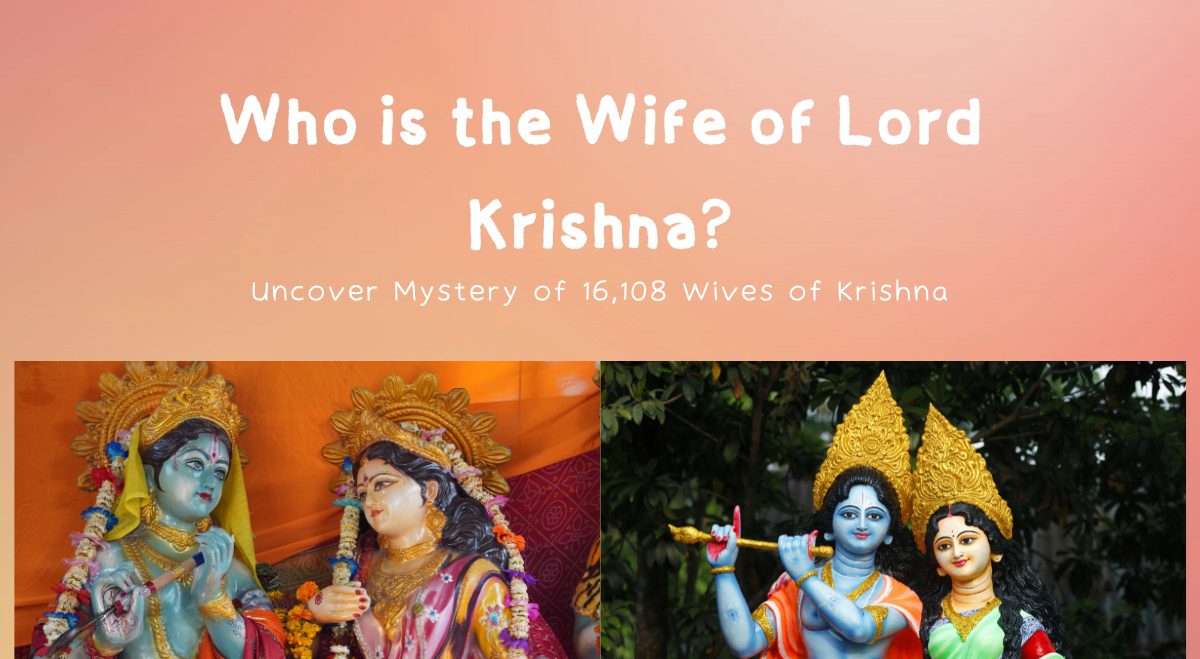Lord Krishna, one of the most beloved and revered deities in Hinduism, is often associated with divine love and devotion. However, when it comes to his marital status, there’s often confusion and misunderstanding. Let’s dive into the fascinating world of Krishna’s relationships and explore the deeper spiritual meanings behind them.
The Eight Principal Wife of Lord Krishna (Ashtabharya)
Contrary to popular belief, Krishna didn’t have just one wife. In fact, he had eight principal wives, known as the Ashtabharya. Each of these marriages holds significant symbolic and political importance in Hindu mythology.
- Rukmini: Krishna’s first and most prominent wife. She’s considered an avatar of Goddess Lakshmi and symbolizes devotion and determination. Rukmini chose Krishna as her husband against her family’s wishes, showing her unwavering faith in him.
- Satyabhama: Known for her beauty and strong will, Satyabhama represents the earthly aspect of Goddess Lakshmi. She’s often portrayed as slightly jealous and possessive of Krishna’s attention.
- Jambavati: The daughter of Jambavan, the bear king. Her marriage to Krishna symbolizes the alliance between different realms and species.
- Kalindi: Also known as Yamuna, she’s the personification of the Yamuna River. This marriage represents Krishna’s connection to nature and the divine flow of life.
- Mitravinda: A princess of Avanti, her marriage to Krishna strengthened political alliances between kingdoms.
- Nagnajiti (also called Satya): The daughter of King Nagnajit of Kosala. Her marriage to Krishna was the result of winning a challenge set by her father.
- Bhadra: A princess of the Kekaya kingdom and Krishna’s cousin. This marriage represents the strengthening of family ties.
- Lakshmana: The daughter of the King of Madra. Like Rukmini, she chose Krishna as her husband in a swayamvara ceremony.
Each of these marriages brought unique qualities and strengths to Krishna’s kingdom of Dwarka, symbolizing the diverse aspects of divine love and governance.
The Story Behind 16108 Wives
Now, you might’ve heard that Krishna had 16,108 wives. This number comes from combining the Ashtabharya with 16,100 women Krishna rescued from the demon king Narakasura.
Here’s the story: Narakasura had kidnapped thousands of women from various kingdoms. After defeating the demon, Krishna found these women in a precarious situation. They feared rejection from their families and society due to their captivity. In an act of compassion and to restore their honor, Krishna married them all.
This massive number isn’t meant to be taken literally. It symbolizes Krishna’s boundless compassion and his role as a protector of the weak and oppressed. These marriages represent the divine’s acceptance of all souls, regardless of their past circumstances.
Radha: The Divine Consort
No discussion of Krishna’s relationships would be complete without mentioning Radha. Interestingly, Radha isn’t considered one of Krishna’s wives in the traditional sense. She’s his divine consort, representing the highest form of devotional love.
Radha and Krishna’s relationship transcends worldly marriages. It symbolizes the union between the individual soul (Radha) and the divine (Krishna). Their love story, set in Krishna’s youth in Vrindavan, is central to many devotional traditions in Hinduism.
Radha doesn’t appear in earlier texts like the Mahabharata or Bhagavata Purana. Her prominence grew in later devotional literature, especially in the works of poets like Jayadeva in the 12th century. Today, she’s an integral part of Krishna worship, often depicted alongside him in temples and artwork.
Spiritual Significance of Krishna’s Marriages
Looking beyond the literal interpretations, Krishna’s marriages hold deep spiritual significance in Hindu philosophy:
- Divine Love: Each relationship represents a different aspect of love and devotion to the divine.
- Cosmic Unity: The marriages symbolize the union of various energies and elements in the universe.
- Inclusivity: Krishna’s acceptance of women from different backgrounds represents the divine’s all-encompassing love.
- Dharma (Duty): Many of these marriages were strategic alliances, showing Krishna’s commitment to his role as a leader and protector.
- Transcendence: The ability to be equally present with multiple wives represents Krishna’s divine nature, beyond human limitations.
In essence, these stories encourage devotees to cultivate a deep, personal relationship with the divine, much like Krishna’s wives did.
Conclusion
So, who is the wife of Lord Krishna? The answer isn’t simple. Krishna had eight principal wives, each representing different aspects of divinity and human experience. He also married 16,100 rescued women, symbolizing his role as a protector and his infinite compassion. And then there’s Radha, who represents the highest form of devotional love.
These stories, rich in symbolism and spiritual meaning, invite us to look beyond surface-level interpretations. They encourage us to explore our own relationship with the divine and to embrace the many facets of love, duty, and devotion in our lives.
As you delve deeper into Hindu philosophy, remember that these myths aren’t meant to be taken literally. Instead, they’re beautiful allegories that can guide us on our spiritual journeys, teaching us about love, compassion, and the eternal dance between the soul and the divine.

